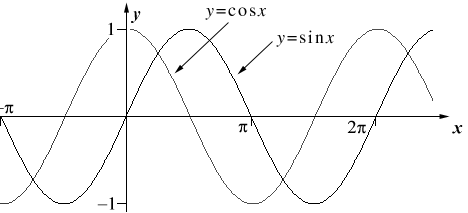Question #13c72
1 Answer
Feb 4, 2018
We seek to prove that:
# sin(npi + theta) -= (-1)^n(sintheta) #
We can use the sine sum of angle identity:
# sin(A+B) -= sinAcosB+cosAsinB #
Applying this to the LHS, we get:
# sin(npi + theta) -= sin(npi)costheta+cos(npi)sintheta #
Now, if we consider the graphs of the trigonometric functions:
We can see that:
# sin(npi) = 0 #
# cos(npi) = { (-1, n " odd"), (1, n " even") :} = (-1)^n #
Hence we have the given result:
# sin(npi + theta) -= 0 + (-1)^nsintheta #
# " " -= (-1)^nsintheta \ \ \ # QED


